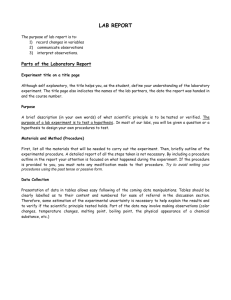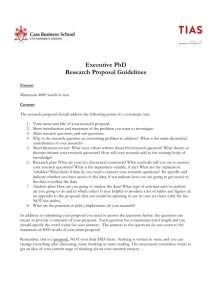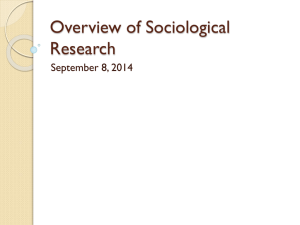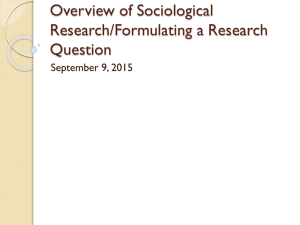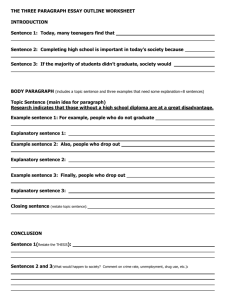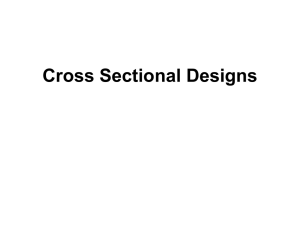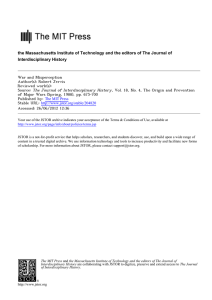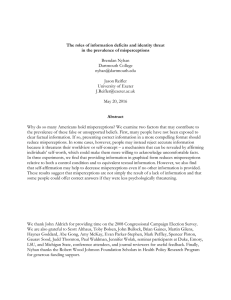Slide show about Case Study Designs
advertisement
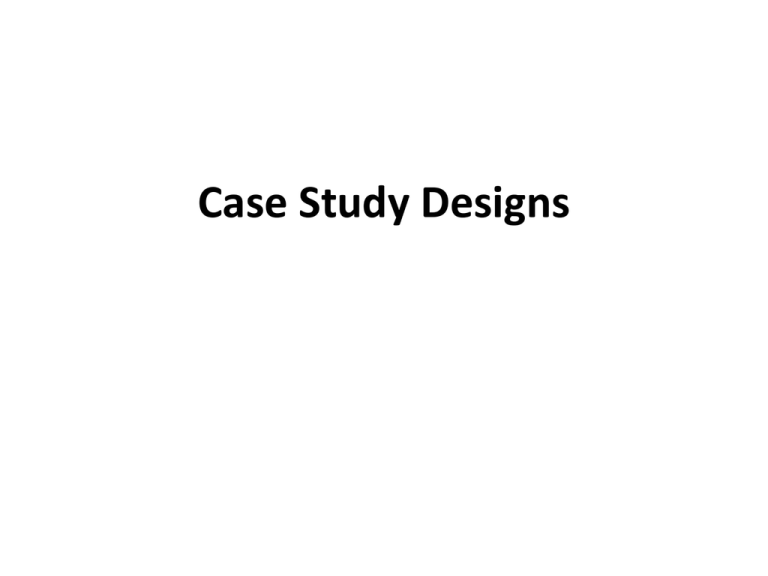
Case Study Designs Research Objective Study relationships among variables for existing groups Show direct cause & effect Explain outcomes after the fact Type of Design Cross-Sectional Longitudinal True Experiment Quasi-Experiment Explanatory Case Study Exploratory Case Study Purpose • The purpose of the case study is to explore, understand and explain the processes and events that have led or contributed to one or more states or conditions of interest. Distinctive Features • Unlike all experiments and all prospective crosssectional or longitudinal designs, in the case study we work “backward” from a known state or condition. • Cases are selected because they exhibit the one or more states or conditions of interest. • Cases are selected based on the observable outcome of processes and events over time. • The state or condition usually refers to the current situation, but can refer to a condition or situation that existed at some point in the past. When to Use Case Studies • We use exploratory case studies when we observe a state or condition that is hard to understand, unanticipated, surprising – something that the current body of knowledge and theory will not explain adequately • We use explanatory case studies when we want to build or test theoretical explanations for a condition or state of interest Did you use one or more theoretical frameworks to develop the research question(s)? Yes No Not a case study Did you develop propositions about the relationships between theoretical constructs or concepts based on those theoretical frameworks? Yes No Did you state the purpose of the study and the criteria by which the quality (success) of the study will be evaluated? Yes Exploratory case study No Not a case study Did you select multiple cases (replications) for study? Yes No Multiple case explanatory study Single case explanatory study Did you use embedded units? Yes Embedded No Holistic Common MISperceptions • There are many common misperceptions about case studies. By the time you study Yin, you should be able to explain why each of the following statements is a MISperception. Common MISperceptions • The case study is the same thing as the “one shot post-test only quasi-experiment.” • The case study is the same thing as an ethnography, life history analysis, or grounded theory. • Case studies do not depend on identifying one or more theories that serve as the basis for developing the research question. • Case studies do not require an careful statement of the systematized definitions of constructs of interest. Common MISperceptions • There is no need to state a proposition (or hypothesis) in the case study design. • There is no need to define a theoretical or accessible population in the case study design. • There are no guidelines (rules if you will) for selecting the cases. • Results of case studies cannot be generalized. • The case study does not require any consideration of threats to internal validity, external validity and explanatory power. Common MISperceptions • Case studies do not need a sample size of more than one. • Case studies can only be used to build, not test theory. • Case studies are just like cross-sectional or longitudinal designs, except for how the sample is selected. • Case studies share nothing in common with experiments. The WORST Misperceptions • You do not need much advance thinking or preparation to conduct a case study – you can start collecting data very quickly. • A case study is a quick and easy way to complete a study. • You do not have to concern yourself much with analysis in case studies because they are simply descriptions. Common Uses Outside the Social Sciences • Another common misperception is that case studies are only used in the social sciences. Quite the contrary, many disciplines make widespread use of this design group. These include, for example – Geology and other earth sciences – Paleontology – Cosmology (how the universe formed and developed) – Forensic sciences (CSI, autopsy, and all that) – Evolutionary biology
